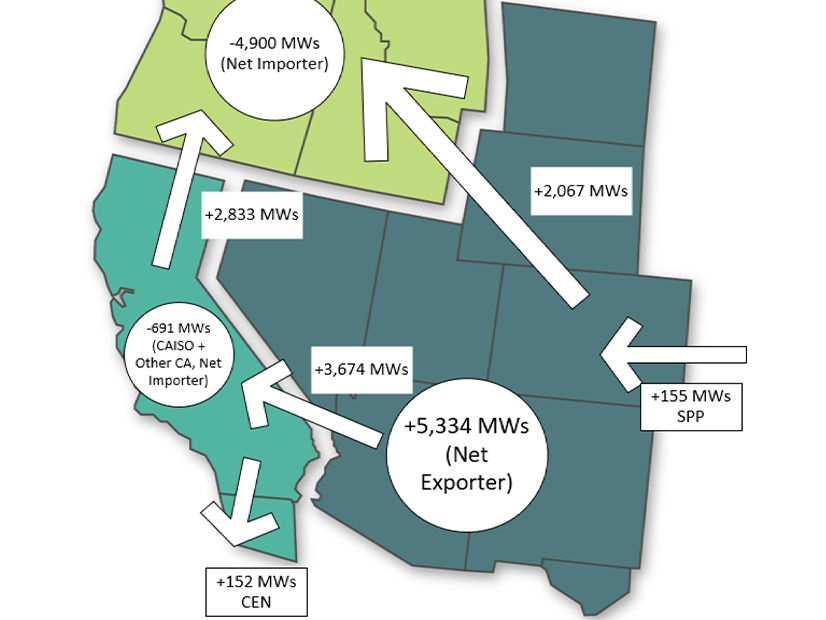
High imports from the Desert Southwest and Rocky Mountain balancing areas (BAs) helped the Northwest survive extreme weather from Jan. 12 to Jan. 16, showing the region’s reliability is at a “tipping point,” the Western Power Pool said.
A report released by WPP on Feb. 8 outlined the actions taken by the RC West Reliability Coordinator and quantified the interchanges that allowed the Northwest to avoid outages.
BAs in the Northwest reported lower-than-normal temperatures for a sustained period, contributing to high loads and the need for imported energy. Starting the morning of Jan. 13 and lasting through the evening of Jan. 15, the reliability coordinator placed four entities in either an Energy Emergency Alert Watch (EEA), EEA 1 or EEA 3. The report said the Northwest imported an average of 4,900 MWh of energy per hour over five days, underscoring the continued call for an interregional resource adequacy program that can provide support across BAs during extreme conditions.
By summing and averaging interchanges between Northwest BAs and Nevada Power Co., PacifiCorp East and Western Area Power Administration, and Upper Great Plains West, the report found that 2,067 MW of power that was delivered to the Northwest originated from the Eastern/Rockies AC system.
Using the same interchange data, the report also demonstrated that while CAISO was exporting to the Northwest during this time, the ISO and other BAs were net importers, receiving more energy from the Desert Southwest than they were exporting to the North.
“The Desert Southwest/Rockies BAs were net exporters of approximately 5,334 MW on average,” the report reads. “Those exports from the Desert Southwest/Rockies region supported CAISO and other California BAs as well as 2,833 MW of imports to the Northwest on the Pacific AC Intertie.”
Call to Action
WPP emphasized the need for initiatives like the Western Resource Adequacy Program to strengthen reliability during extreme weather events.
During the cold snap, “temperatures and loads were at or near historic peaks, BAs were managing through energy emergencies in real time and there was a significant amount of support required from BAs outside of the Northwest Region, particularly from the Desert Southwest and Rockies regions,” the report reads. “All these factors point to the need to act quickly to address potential capacity challenges in the Northwest and realize the benefits afforded by full, binding implementation of a nearly WECC-wide resource adequacy program like WPPʼs WRAP.”
CAISO is expected to release a report the week of Feb. 19 analyzing the response to January’s extreme weather.

